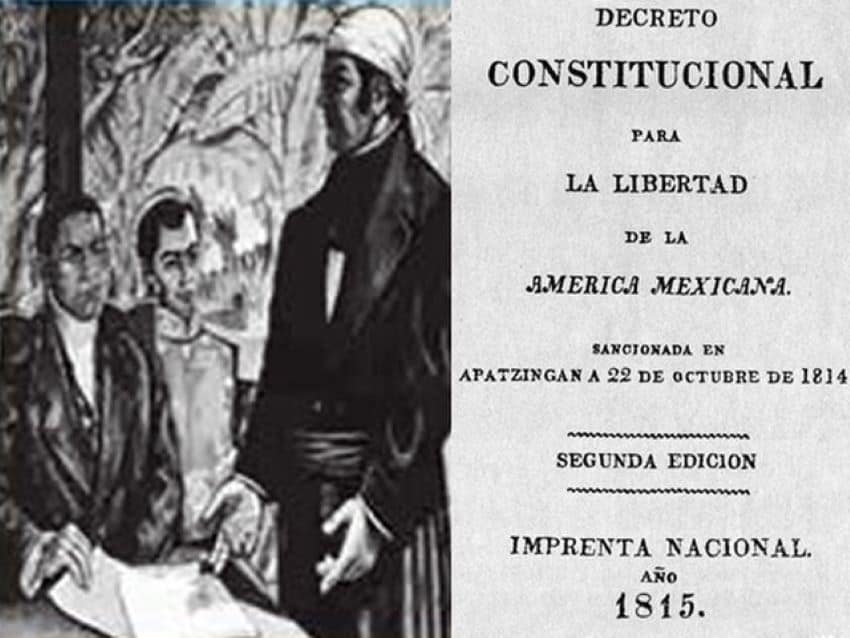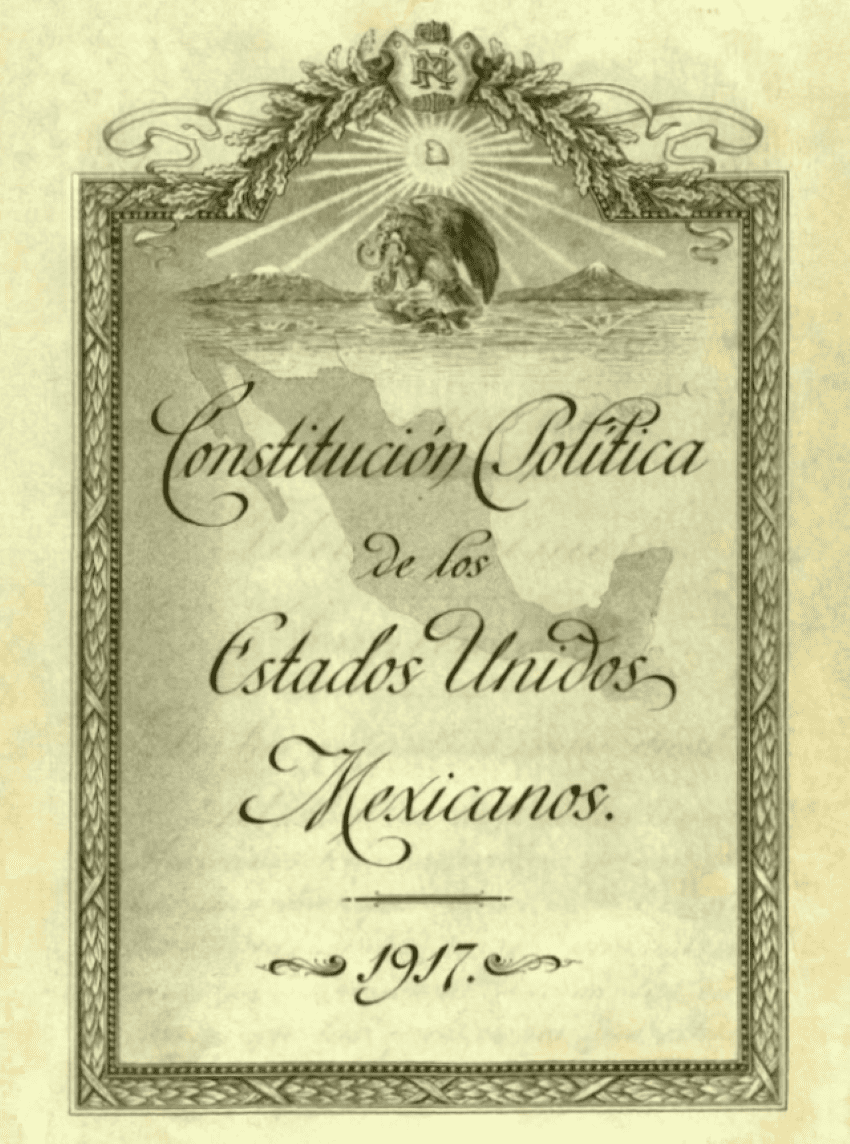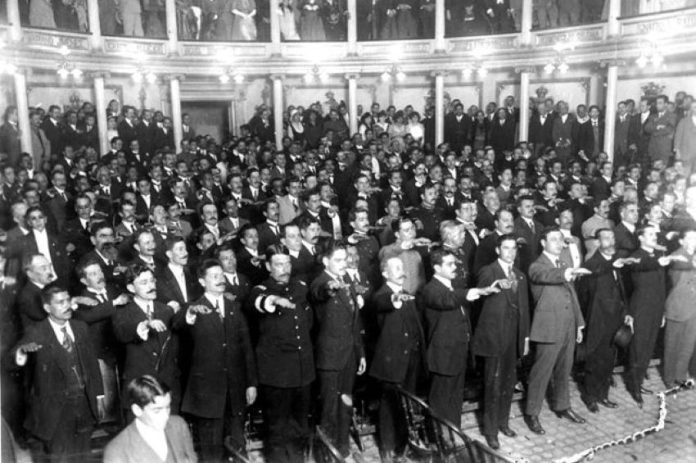Mexico’s current constitution — also known as the Constitution of 1917 — was the sixth attempt at a governing document to explain how Mexico should be governed and what rights should be afforded to its citizens.
Despite its comparative age — some 107 years — the document is considered to be one of the first modern attempts at a constitution, and was copied by other major political powers of the 20th Century, who wanted to guarantee their citizens the same expansive and protective rights that Mexicans were allowed.
Constitution Day is a public holiday in Mexico, but why has the document become such an important part of Mexican life, and why did so many European powers choose to emulate it?
Five constitutions, five failures
To understand how incredible it was that most of Mexico managed to simply agree on the 1917 document, we need to understand what came before, and how spectacularly bad some of the previous constitutions were.

The first document, 1814’s Constitution of Apatzingán, declared the 17 states of Mexico (including the state of Técpan, now part of modern-day Guerrero), established Catholicism as the official state religion and demanded that power be given to the people. The document governed all the territories controlled by Mexico during the War of Independence, but never came into force, and its biggest proponent, José Maria Morelos y Pavón, was killed as Spain regained control of the country.
The Federal Constitution of the United Mexican States of 1824 was somewhat more successful. It was the first constitution to be actually implemented, running first until 1835, and then between 1847 and 1857. It recognized 19 states, 4 territories and Tlaxcala (sort of).
The period between 1835 and 1843, when the 1824 Constitution was not in force, was governed by the “Siete Leyes” — seven laws implemented by President López de Santa Ana. The laws were:
- Citizenship for anyone who could read Spanish and earned more than 100 pesos a year — except male domestic workers and women, neither of whom could vote.
- An elected, 11-member Supreme Court was established.
- The Congress of Deputies and the Senate were established (a system that Mexico still uses today).
- The Supreme Court, Senate and cabinet would select the President and Vice-President.
- The president could suspend Congress and suppress the Supreme Court.
- All states were abolished and replaced with French-style “departments.”
- Reverting to the 1824 constitution was explicitly banned for six years.
Change came around again in 1843, when the Siete Leyes were themselves replaced, this time with the Bases Orgánicas, which further shrank the voter base by raising the earnings threshold to 200 pesos per year. It also established an electoral college and increased the powers afforded to the president.
This too did not last, and by 1847, the old Constitution of 1824 was back, managing a further 10 years in effect, before it was stripped and replaced by the Constitution of 1857. This time, universal (male) suffrage was guaranteed, alongside freedom of speech, freedom of the press, the right to bear arms and a reaffirmation of the abolition of slavery, cruel and unusual punishment and the death penalty. There were also attempts by the authors to create a federal republic, with an independent judiciary and a small executive, which it hoped would prevent the rise of a dictator.
It did not manage the last part.
The Revolution
The Porfiriato, a 30-year dictatorship under Porfirio Díaz, began in 1876, and lasted in one form or another until 1911, when Mexico was once again plunged into violent civil conflict.
In the struggle to free Mexico from dictatorship, as many as 2.7 million Mexicans (and 500 Americans) were killed in the bitter fighting. Legends like Emiliano Zapata, Pancho Villa, Álvaro Obregón, Venustiano Carranza and Ricardo Flores Magón were born and died, and power changed hands several times.
Díaz fled into exile in 1911 but the country continued to struggle, as the diverse factions that represented Mexico’s varied interests fought for ultimate control. As the fighting rumbled on for years after Díaz’s abdication, political leaders increasingly realized that the revolution would not end until a broad consensus had been reached, and many looked to build coalitions that would help stop the violence.
The Constitution

Carranza and his constitutionalist faction hoped that by building a new constitution through consensus, further bloodshed could be averted, and that Mexico could develop as quickly in the 20th century as it had in the 19th.
A constitutional convention was called in Querétaro’s Iturbide Theater, where political groups from across Mexico were encouraged to come together to help shape a final document that reflected the will of the whole country rather than individual factions. The theater was chosen as the site for the new convention, as it was the place where Emperor Maximilian of Mexico was executed in 1867 — and the site of Mexico’s second independence day.
By early 20th-century standards, the resulting work was extremely liberal. The document was pushed further left by pressure from Emiliano Zapata and Pancho Villa, as well as their militant supporting factions. While these two groups were banned from the constitutional congress itself, the power they held in their respective communities meant that their voices were heard in the theater just the same.
The document was extremely pro-freedom, even by modern standards. It guaranteed freedom from slavery for anyone who entered Mexico, regardless of origin. It guaranteed freedom of religion for any citizen, but did not uphold any one religion as an official state doctrine, marking a break from the control that the church had so often exerted over the country.
Mexicans could not be retroactively prosecuted for actions that were not criminal at the time, protecting them from any further changes to the law.
Two years after the adoption of the Constitution, Weimar Germany, the brief republic that followed the collapse of the Second Reich, modeled itself on what had been written in Querétaro. As left-wing politics swept Europe in the early 20th century, even the Soviet Union sought to emulate and promote the high levels of personal freedoms afforded to Mexican citizens. So closely aligned was Republican Spain with Mexican political ideals, that the government-in-exile moved to Mexico City to oppose the Franco regime, where they remained until 1976.
Mexico today
While things got off to a rocky start — Carranza was executed by Gustavo I. Madero after a coup in 1920, Obregón was killed shortly after being allowed a second term, and the PRI party managed to hold onto power from 1929 until 2000 — the fundamental rights that made Europe look across the ocean for an example of human freedom have remained more or less in force.
The right to strike continues to be a cherished and oft-used article of the constitution — although despite the labor law provisions, Mexico continues to have some of the longest working hours in the world.
While not afforded the same near-mythical status as its U.S. counterpart, the Mexican Constitution has held up well today. Though Mexican democracy is far from perfect, there have been no more dictators and the freedoms afforded to Mexicans continue to largely be upheld.
By Mexico News Daily writer Chris Havler-Barrett
